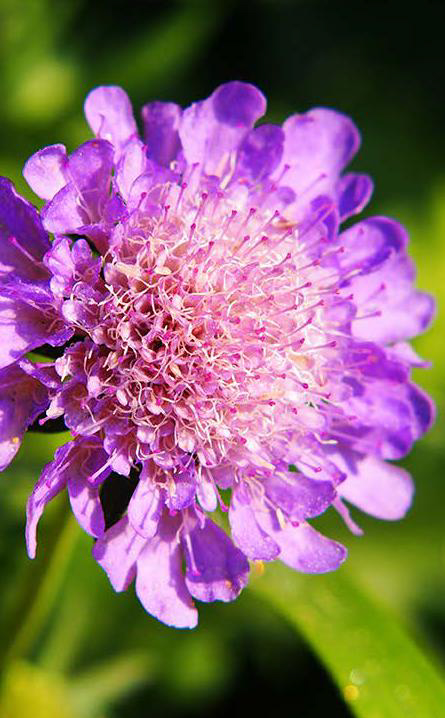Scabious: Frilly and Fun!
Scabiosa, or Scabious, may be delicate-looking but it’s actually a tough little survivor. It is native to several rugged terrains across Europe, Asia, and Africa. Scabious heads are not single flowers, but rather a collection of small florets arranged in a sort of spiky ball. Likely, this is the origin of its (definitely) more inviting name, Pincushion Flower. Which is the topic of Floralife’s aptly-titled piece, “Scabiosa – the Pincushion Flower” in this month’s LivRio!

First, let’s address that name. If Scabious reminds you of something clinical and vaguely unpleasant, you are not alone. (Seriously, Latin botanists of old, what’s the deal with these flower names?) Some say it was used as a topical herbal remedy during The Plague.
Today, however, it’s a popular bloom in floral arrangements, coming in several colors and adding a contrasting frilly texture. With its rugged heritage (rock faces, scrubland) Scabious can enjoy long vase life. As always, proper care is key! Let’s take a look at some Scabious Care and Handling tips from your friends at Floralife®. These include advice on:

- Purchasing: including color considerations and stage of opening. Also, a caution about ethylene sensitivity, along with the recommended use of EthylBloc™ or EthylGuard.
- Hydration: As always, processing begins with clean tools and buckets, courtesy of Floralife® D.C.D.® Cleaner. Cut stems and place them in a chilled (34 to 38 F / 1-3 C) flower food solution such as Floralife® Express.
- Shipping and Storage: Again, recommended temperatures are between 34 to 38 F (1-3 C). Wet shipping is recommended.
- Rehydration at Store Level and Storage: Again, clean and sanitize tools, buckets, and surfaces. Condition stems with Floralife® Quick Dip. Floralife Crystal Clear®, or Floralife® Express 300.
- Vase Care: Stem cutting followed by Floralife® Quick Dip. Then a vase solution of Floralife Crystal Clear®, or Floralife® Express 300.
- Common Defects: including botrytis (packed too tightly / poor air flow) and floret dropping (possible ethylene damage.)
- Special Considerations: Notes on ethylene sensitivity, storage, and FIFO considerations, and a tip for possible extended vase life (read the article!)
Scabious: Longer Vase Life Depends on You!
Well, you and Floralife®! Be sure to read the original LivRio article. And to learn more about best practices from the experts in flower care, visit us at www.floralife.com.
